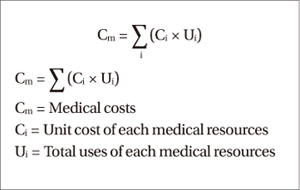1. Mandell LA. Epidemiology and etiology of community-acquired pneumonia. Infect Dis Clin North Am. 2004; 18:761–776.
2. Korea National Statistical Office. 2010 annual report on the cause of death statistics: Nationwide. Daejeon: Korea National Statistical Office;2010.
3. Marrie TJ. Epidemiology of community-acquired pneumonia in the elderly. Semin Respir Infect. 1990; 5:260–268.
4. Riquelme R, Torres A, El-Ebiary M, de la Bellacasa JP, Estruch R, Mensa J, Fernández-Solá J, Hernández C, Rodriguez-Roisin R. Community-acquired pneumonia in the elderly: a multivariate analysis of risk and prognostic factors. Am J Respir Crit Care Med. 1996; 154:1450–1455.
5. Fine MJ, Smith MA, Carson CA, Mutha SS, Sankey SS, Weissfeld LA, Kapoor WN. Prognosis and outcomes of patients with community-acquired pneumonia: a meta-analysis. JAMA. 1996; 275:134–141.
6. Woo JH, Kang JM, Kim YS, Shin WS, Ryu JH, Choi JH, Kim YR, Cheong HJ, Uh ST, Park CS, et al. A prospective multicenter study of community-acquired pneumonia in adults with emphasis on bacterial etiology. Korean J Infect Dis. 2001; 33:1–7.
7. Van Mens SP, Meijvis SC, Endeman H, van Velzen-Blad H, Biesma DH, Grutters JC, Vlaminckx BJ, Rijkers GT. Longitudinal analysis of pneumococcal antibodies during community-acquired pneumonia reveals a much higher involvement of Streptococcus pneumoniae than estimated by conventional methods alone. Clin Vaccine Immunol. 2011; 18:796–801.
8. Niederman MS, Mandell LA, Anzueto A, Bass JB, Broughton WA, Campbell GD, Dean N, File T, Fine MJ, Gross PA, et al. Guidelines for the management of adults with community-acquired pneumonia: diagnosis, assessment of severity, antimicrobial therapy, and prevention. Am J Respir Crit Care Med. 2001; 163:1730–1754.
9. Lee HJ. Report on economic burden of pneumococcal diseases in Korea 2006. Daejeon: Korea Centers for Disease Control and Prevention;2006.
10. Weycker D, Strutton D, Edelsberg J, Sato R, Jackson LA. Clinical and economic burden of pneumococcal disease in older US adults. Vaccine. 2010; 28:4955–4960.
11. Sohn JW, Park SC, Choi YH, Woo HJ, Cho YK, Lee JS, Sim HS, Kim MJ. Atypical pathogens as etiologic agents in hospitalized patients with community-acquired pneumonia in Korea: a prospective multi-center study. J Korean Med Sci. 2006; 21:602–607.
12. Yu CW, Park CW, Hwang BY, Song JY, Park O, Sohn JW, Cheong HJ, Kim WJ, Kim MJ, Park SC. Clinical features and prognosis of community-acquired pneumonia in the elderly patients. Korean J Infect Dis. 2000; 32:212–218.
13. Vogel F. Intravenous/oral sequential therapy in patients hospitalised with community-acquired pneumonia: which patients, when and what agents? Drugs. 2002; 62:309–317.
14. Dunbar LM, Wunderink RG, Habib MP, Smith LG, Tennenberg AM, Khashab MM, Wiesinger BA, Xiang JX, Zadeikis N, Kahn JB. High-dose, short-course levofloxacin for community-acquired pneumonia: a new treatment paradigm. Clin Infect Dis. 2003; 37:752–760.
15. Mandell LA. Epidemiology and etiology of community-acquired pneumonia. Infect Dis Clin North Am. 2004; 18:761–776.
17. Kyaw MH, Rose CE Jr, Fry AM, Singleton JA, Moore Z, Zell ER, Whitney CG. Active Bacterial Core Surveillance Program of the Emerging Infections Program Network. The influence of chronic illnesses on the incidence of invasive pneumococcal disease in adults. J Infect Dis. 2005; 192:377–386.
18. Koivula I, Sten M, Mäkelä PH. Risk factors for pneumonia in the elderly. Am J Med. 1994; 96:313–320.
19. Song JH, Jung KS. Treatment guidelines for community-acquired pneumonia in Korea: an evidence-based approach to appropriate antimicrobial therapy. J Korean Med Assoc. 2010; 53:20–42.
21. Kim KH. Pneumococcal polysaccharide vaccine, performance in local and effectiveness. In : Presentation at 34th Korean Otologic Society Symposium; 2007.
22. Choi E. Direct and indirect effects of pneumococcal protein conjugate vaccine. J Korean Med Assoc. 2008; 51:119–126.
23. Kang JH, Kim HB, Sohn JW, Lee SO, Chung MH, Cheong HJ, Choi YH, Choi JH, Choi JY, Choe HJ. Adult immunization schedule recommended by the Korean society of infectious diseases, 2007. Infect Chemother. 2008; 40:1–13.
24. Pneumonia. European lung white book. 2nd ed. Sheffield: European Respiratory Society/European Lung Foundation;2003. p. 55–65.
25. Bartlett JG, Dowell SF, Mandell LA, File TM Jr, Musher DM, Fine MJ. Practice guidelines for the management of community-acquired pneumonia in adults: infectious diseases society of America. Clin Infect Dis. 2000; 31:347–382.
26. Capelastegui A, Espana PP, Quintana JM, Areitio I, Gorordo I, Equrrola M, Bilbao A. Validation of a predictive rule for the management of community-acquired pneumonia. Eur Respir J. 2006; 27:151–157.
27. Kim MJ. Disease burden of pneumococcal infection and serotypes of streptococcus pneumonia in Korean adults. Korea Centers for Disease Control and Prevention;2007. p. 30–35.


